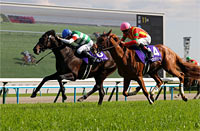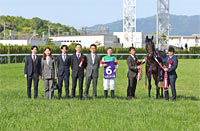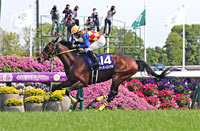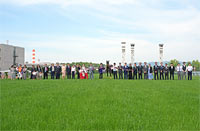Tenno Sho (Spring) (G1) - Data Analysis
Top contest of the spring season that determines the long-distance champion
After achieving his first G1 victory in the 2023 Tenno Sho (Spring), Justin Palace went on to finish 3rd in the Takarazuka Kinen and 2nd in the Tenno Sho (Autumn) of the same year. In addition, 2022 winner Titleholder won the Takarazuka Kinen in his next race, and received the JRA Award for Best Older Colt or Horse in the same year. Although the Tenno Sho (Spring) is the longest JRA flat G1 race, many winners in recent years have also performed well in major middle-distance races. We can therefore conclude this is a race that calls for a high level of overall competence. Let’s now analyze some features shared by successful runners in this race based on results over the last 10 years.
Focus on runners with 21 or fewer career starts
Of the 30 Top 3 finishers over the last 10 years, 24 had 21 or fewer career starts. Conversely, runners with 22 or more career starts struggled with a Top 3 ratio of 9.2%. If we limit our analysis to the seven years since 2017, performance in this group was [0-2-0-40] (Top 3 ratio of 4.8%). We should therefore lower our expectations of runners with overly long careers. [Table 1]
[Table 1] Performance by total career starts (last 10 years)
| Total career starts |
Performance
[1st-2nd-3rd-4th or lower] |
Win ratio |
Top 2 ratio |
Top 3 ratio |
| 21 or fewer |
9-7-8-77 |
8.9% |
15.8% |
23.8% |
| 22 or more |
1-3-2-59 |
1.5% |
6.2% |
9.2% |
Strong performers last time out have the edge
Of the 30 Top 3 finishers over the last 10 years, 22 had finished either 1st, or 2nd or lower with a time difference of 0.2s or less with the winner in their previous race. Conversely, runners that had finished 2nd or lower with a time difference of 0.3s or more with the winner in their previous race, struggled with a Top 3 ratio of 7.6%. In other words, we need to discount runners coming straight from a major defeat. [Table 2]
[Table 2] Performance by finish in the previous race and time difference with winner in that race (last 10 years)
Finish in previous race and time
difference with winner in that race |
Performance
[1st-2nd-3rd-4th or lower] |
Win ratio |
Top 2 ratio |
Top 3 ratio |
1st, or 2nd or lower with time
difference of 0.2s or less with winner |
8-7-7-38 |
13.3% |
25.0% |
36.7% |
2nd or lower with time difference
of 0.3s or more with winner |
2-3-3-97 |
1.9% |
4.8% |
7.6% |
| Pulled up |
0-0-0-1 |
0% |
0% |
0% |
Position when passing the 4th corner in the previous race is a key factor
Of the 30 Top 3 finishers over the last 10 years, 26 had contested a domestic race in their previous race and had been positioned 6th or higher when passing the 4th corner in that race. Conversely, runners that had been positioned 7th or lower struggled with a Top 3 ratio of 4.8%. If we limit our analysis to the eight years since 2016, performance in this group was [0-1-0-46] (Top 3 ratio of 2.1%). This suggests we should probably lower our expectations of runners that passed the 4th corner of their previous race in 7th or lower position. [Table 3]
[Table 3] Among runners that had contested a domestic race in their previous race, performance by position when passing the 4th corner in that race (last 10 years)
Position when passing 4th
corner in previous race |
Performance
[1st-2nd-3rd-4th or lower] |
Win ratio |
Top 2 ratio |
Top 3 ratio |
| 6th or higher |
10-8-8-76 |
9.8% |
17.6% |
25.5% |
| 7th or lower |
0-2-1-59 |
0% |
3.2% |
4.8% |
Track record and position when passing the 4th corner are also key points to watch
Of the 30 Top 3 finishers over the last 10 years, 24 had experience of “finishing 1st after being positioned 7th or higher when passing the 4th corner” in a JRA G1 or G2 race since the previous year. Conversely, runners without such experience struggled with a Top 3 ratio of 5.6%. We should therefore be skeptical of runners that have not won a JRA G1 or G2 race since the previous year, or those with a win in such a race after being positioned only 8th or lower when passing the 4th corner. [Table 4]
[Table 4] Performance by experience of “finishing 1st after being positioned 7th or higher when passing the 4th corner” in a JRA G1 or G2 race since the previous year (last 10 years)
| Experience |
Performance
[1st-2nd-3rd-4th or lower] |
Win ratio |
Top 2 ratio |
Top 3 ratio |
| Yes |
9-9-6-34 |
15.5% |
31.0% |
41.4% |
| No |
1-1-4-102 |
0.9% |
1.9% |
5.6% |
In addition, among the six Top 3 finishers without experience of “finishing 1st after being positioned 7th or higher when passing the 4th corner” in a JRA G1 or G2 race since the previous year, four had experience of finishing in the Top 3 of a JRA G1 race with a distance above 2,000m but below 3,000m. In other words, runners are unlikely to perform well if they have not only failed to secure a victory after being positioned 7th or higher when passing the 4th corner in a JRA G1 or G2 race since the previous year, but also not achieved a Top 3 finish in a G1 race with a distance of around 2,400m. [Table 5]
[Table 5] Among runners without experience of “finishing 1st after being positioned 7th or higher when passing the 4th corner” in a JRA G1 or G2 race since the previous year, performance by experience of finishing in the Top 3 of a JRA G1 race with a distance above 2,000m but below 3,000m (last 10 years)
| Experience |
Performance
[1st-2nd-3rd-4th or lower] |
Win ratio |
Top 2 ratio |
Top 3 ratio |
| Yes |
1-1-2-11 |
6.7% |
13.3% |
26.7% |
| No |
0-0-2-91 |
0% |
0% |
2.2% |
Seek out the winner!
No winners among runners without a previous Top 2 finish in a G1 race
The last 10 winners all had experience of finishing in the Top 2 of a G1 race with a shorter distance than the Tenno Sho (Spring). The last runner to secure a victory without such experience was Beat Black in 2012. This suggests that runners without experience of finishing in the Top 2 of a G1 race with a shorter distance than the Tenno Sho (Spring) are unlikely to win. Another shared feature among the 10 winners was that they had all been positioned 6th or higher when passing the 4th corner in their previous race. This means we should also take into account the trends shown in Table 3. [Table 6]
[Table 6] Winners’ highest finish in “a JRA G1 race with a shorter distance than the Tenno Sho (Spring)” and position when passing the 4th corner in the previous race (last 10 years)
| Year |
Winner |
Highest finish in JRA G1 race with shorter distance than Tenno Sho (Spring) |
Position when passing 4th corner in previous race |
| 2014 |
Fenomeno |
2nd (2012 Tenno Sho [Autumn], etc.) |
3rd |
| 2015 |
Gold Ship |
1st (2014 Takarazuka Kinen, etc.) |
2nd |
| 2016 |
Kitasan Black |
1st (2015 Kikuka Sho [Japanese St. Leger]) |
Leader |
| 2017 |
Kitasan Black |
1st (2017 Osaka Hai, etc.) |
2nd |
| 2018 |
Rainbow Line |
2nd (2016 Kikuka Sho [Japanese St. Leger]) |
4th |
| 2019 |
Fierement |
1st (2018 Kikuka Sho [Japanese St. Leger]) |
6th |
| 2020 |
Fierement |
1st (2018 Kikuka Sho [Japanese St. Leger]) |
4th |
| 2021 |
World Premiere |
1st (2019 Kikuka Sho [Japanese St. Leger]) |
4th |
| 2022 |
Titleholder |
1st (2021 Kikuka Sho [Japanese St. Leger]) |
Leader |
| 2023 |
Justin Palace |
2nd (2021 Hopeful Stakes) |
2nd |
(Masaya Ibuki)
|


















